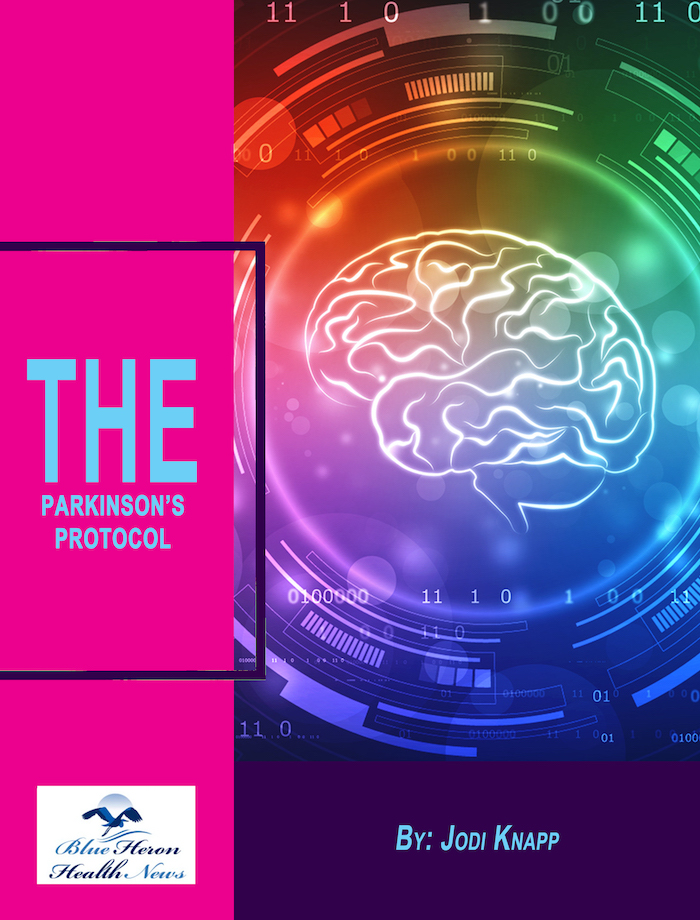
The Parkinson’s Protocol™ By Jodi Knapp Parkinson’s disease cannot be eliminated completely but its symptoms can be reduced, damages can be repaired and its progression can be delayed considerably by using various simple and natural things. In this eBook, a natural program to treat Parkinson’s disease is provided online. it includes 12 easy steps to repair your body and reduce the symptoms of this disease. The creator of this program has divided into four segments to cover a complete plan to treat this disease along with improving your health and life by knowing everything about this health problem. The main focus of this program is on boosting the levels of hormone in your brain by making e a few easy changes in your lifestyle, diet, and thoughts
How does physical activity impact Parkinson’s disease management?
Physical activity plays a crucial role in managing Parkinson’s disease (PD), as it can help alleviate symptoms, improve quality of life, and slow disease progression. Parkinson’s disease affects motor function, causing symptoms like tremors, stiffness, bradykinesia (slowness of movement), and balance problems. Regular physical activity can address many of these issues and improve both physical and mental well-being. Below are the key ways physical activity impacts Parkinson’s disease management:
1. Improves Motor Function
- Maintaining Mobility and Flexibility: Parkinson’s disease can lead to stiffness and rigidity, making it difficult for individuals to move freely. Physical activities such as stretching, yoga, or tai chi can improve flexibility and reduce stiffness, allowing for better range of motion and ease of movement.
- Enhances Gait and Balance: Exercises that focus on improving gait and balance, such as walking, dancing, or specialized PD exercises, help reduce the risk of falls, a major concern for individuals with Parkinson’s. Regular physical activity strengthens the muscles responsible for stability and coordination, which can improve walking speed and posture.
- Reduces Bradykinesia: Regular movement, especially aerobic exercise, can help combat bradykinesia (slowness of movement) by improving coordination and speed of voluntary movements. Activities like walking, cycling, or swimming help engage large muscle groups, which can make movements smoother and faster.
2. Boosts Dopamine Production and Neuroplasticity
- Stimulating Dopamine Release: Parkinson’s disease is characterized by a decrease in dopamine production in the brain. Physical activity has been shown to help stimulate the release of dopamine, which can improve motor function and mood. Exercises that raise the heart rate, such as aerobic activities, may also promote the release of brain-derived neurotrophic factor (BDNF), which supports the growth and survival of neurons.
- Neuroplasticity and Brain Health: Regular exercise encourages neuroplasticity, which is the brain’s ability to form new connections and adapt to changes. This is particularly important in Parkinson’s disease, where neurodegeneration affects motor and cognitive function. Exercise may help the brain adapt to the loss of dopamine-producing cells, improving overall brain health.
3. Enhances Mood and Reduces Anxiety and Depression
- Mood Improvement: Parkinson’s disease is often associated with depression, anxiety, and other mood disorders due to both the neurological changes and the challenges of living with a chronic condition. Physical activity can significantly improve mood by stimulating the production of endorphins (the body’s natural mood enhancers) and serotonin, a neurotransmitter linked to feelings of well-being.
- Reduction in Anxiety: Exercises like yoga, tai chi, and mindfulness-based movement practices can help reduce stress and anxiety by promoting relaxation, deep breathing, and body awareness. This can be especially beneficial for Parkinson’s patients who may experience anxiety as a result of motor difficulties or the uncertainty of disease progression.
4. Improves Cardiovascular and Respiratory Health
- Heart Health: People with Parkinson’s disease may also face cardiovascular challenges, as the disease can contribute to poor circulation and heart problems. Aerobic exercises like walking, cycling, or swimming help improve heart health by increasing heart rate, enhancing circulation, and improving overall cardiovascular endurance.
- Better Lung Function: Regular physical activity helps improve lung function by increasing oxygen intake and respiratory efficiency. This is especially beneficial for people with Parkinson’s who may experience breathing difficulties or reduced stamina.
5. Supports Weight Management
- Maintaining a Healthy Weight: Parkinson’s disease can lead to changes in metabolism, reduced appetite, and difficulty with swallowing, which may result in weight loss. Physical activity helps maintain a healthy weight by promoting calorie burning and improving muscle mass. Conversely, some individuals may also struggle with weight gain due to reduced physical activity, in which case exercise can help with weight management and maintaining an active lifestyle.
6. Promotes Social Interaction and Cognitive Function
- Engagement and Socialization: Participating in group exercise classes, such as Parkinson’s-specific exercise programs or dance classes, provides opportunities for social interaction. Social support and maintaining social connections are important for emotional well-being and can help prevent feelings of isolation and depression, which are common in Parkinson’s patients.
- Cognitive Benefits: Regular physical activity is beneficial for cognitive function in Parkinson’s disease. Exercise has been shown to improve memory, attention, and executive function, which may decline as the disease progresses. Activities that require coordination and mental focus, such as dancing or tai chi, engage both the body and mind, helping to maintain cognitive abilities.
7. Prevention of Secondary Complications
- Bone Health: People with Parkinson’s are at an increased risk of osteoporosis and fractures due to reduced bone density and falls. Weight-bearing exercises like walking, strength training, and tai chi can help improve bone density and reduce the risk of fractures.
- Prevention of Muscle Weakness: Parkinson’s disease can lead to muscle weakness and atrophy due to reduced activity and rigidity. Strength training and resistance exercises help build muscle strength, improve posture, and prevent muscle loss, making it easier to perform daily tasks.
8. Enhances Sleep Quality
- Better Sleep: Sleep disturbances are common in Parkinson’s disease, including difficulty falling asleep, frequent waking during the night, and restless leg syndrome. Physical activity helps promote better sleep by reducing stress and anxiety, as well as providing physical fatigue that can make it easier to fall asleep and stay asleep.
9. Types of Exercise Beneficial for Parkinson’s Disease
- Aerobic Exercises: Activities like walking, cycling, swimming, and dancing improve cardiovascular health, lung function, and overall stamina. These exercises can also help with mood regulation and sleep quality.
- Strength Training: Light resistance training using weights, resistance bands, or bodyweight exercises can improve muscle strength, which is important for maintaining mobility and reducing the effects of bradykinesia and rigidity.
- Balance and Coordination Exercises: Tai chi, yoga, and dancing (such as ballroom or jazzercise) help improve balance, flexibility, and coordination, reducing the risk of falls.
- Stretching and Flexibility: Gentle stretching exercises can help reduce stiffness and improve flexibility, which is important for managing Parkinson’s symptoms.
- Mind-Body Exercises: Yoga, tai chi, and Pilates promote relaxation, mindfulness, balance, and flexibility, and are particularly useful for managing stress, anxiety, and mood disturbances.
10. Guidance and Safety
- Consulting with Healthcare Providers: Before starting a new exercise regimen, it is essential for individuals with Parkinson’s to consult with a healthcare provider or physical therapist. They can tailor exercise programs based on the individual’s abilities and limitations and ensure that exercises are safe and effective.
- Gradual Progression: It’s important to start with low-impact activities and gradually increase intensity and duration over time. The goal is consistency rather than intensity, as regular physical activity is more beneficial than occasional intense sessions.
Conclusion
Physical activity is an essential component of Parkinson’s disease management, offering benefits for motor function, mood, cardiovascular health, and overall well-being. Regular exercise can help reduce symptoms such as rigidity, bradykinesia, and balance problems, while also promoting neuroplasticity, improving cognition, and reducing the risk of falls and fractures. Engaging in a variety of exercises, including aerobic, strength, flexibility, and balance training, can help individuals with Parkinson’s maintain a higher quality of life and greater independence. Always consult with a healthcare provider or physical therapist to ensure the exercise program is appropriate and safe.

The Parkinson’s Protocol™ By Jodi Knapp Parkinson’s disease cannot be eliminated completely but its symptoms can be reduced, damages can be repaired and its progression can be delayed considerably by using various simple and natural things. In this eBook, a natural program to treat Parkinson’s disease is provided online. it includes 12 easy steps to repair your body and reduce the symptoms of this disease. The creator of this program has divided into four segments to cover a complete plan to treat this disease along with improving your health and life by knowing everything about this health problem. The main focus of this program is on boosting the levels of hormone in your brain by making e a few easy changes in your lifestyle, diet, and thoughts